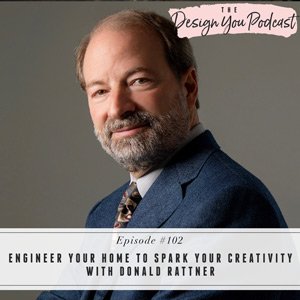
My guest on the podcast this week is architect Donald Rattner, whose latest book, My Creative Space: How to Design Your Home to Stimulate Ideas and Spark Innovation, 48-Science-based Techniques, is the basis of our conversation today. Donald helps individuals and organizations maximize creativity in the workplace, residential, wellness, and retail environments, which you all know is totally up my alley.
While we have aligned passions and work in similar industries, I am so excited for you to learn as much as I have about the combination of science and architecture coming together in the realm of creativity and sparking new ideas. Donalds tips for designing your space to bring you more creativity are simple, common sense, and often zero cost too, so there are no excuses for not trying them out to see multitudes of benefits appear. Not only does it affect what you see visually, but you’ll mentally and emotionally feel the difference too.
Listen in on our conversation today to discover how you can engineer your home to make a world of difference in your life. You have to check out Donald’s book to learn more of his techniques that are more relevant to you and your physical environment, and watch that creativity flow!
If you want to keep this conversation going, you have to join my free Design You Podcast community on Facebook. We have great conversations over there about the podcast episodes and our podcast guests are in there too! So head on over and I’ll see you there!





